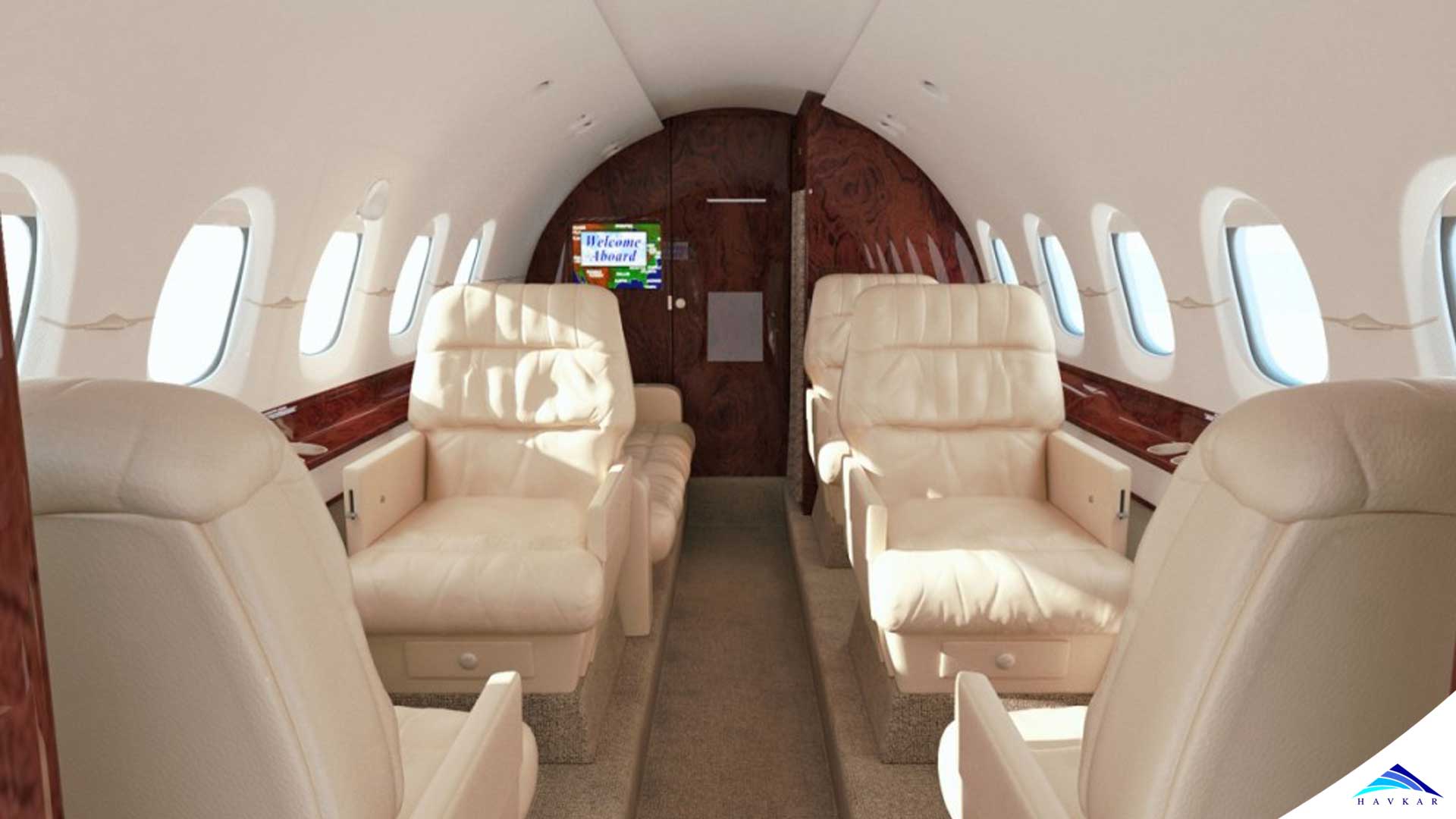
Air charter is about convenience, with route and flight schedule tailored to customers’ specific requirements. Direct, point-to-point flights with flexible departure times to airports, which are often inaccessible by regular airlines, make travel experience enjoyable and stress-free.
Most charters are ready to fly on very short notice, with minimal formalities. For passenger flights there are no tickets required: upon booking a flight, customers receive a complete itinerary with the FBO’s (Fixed Base Operator) details for both departure and arrival, aircraft tail number and pilots’ contact numbers. Departures are mainly from small, general aviation terminals with simplified procedures which eliminates the hassle of congested airports and long queues to check-in counters and security control. Passengers can arrive minutes before their flights and are escorted with luggage directly to their aircraft. After arrival they are transferred straight to pre-arranged ground transportation to help them reach their final destination smoothly, with a minimum waiting time.
Air charter guarantees passengers high level of privacy: they are the ones to decide with whom they share cabin environment, without distractions or eavesdropping.

Departures from facilities located away from main terminals help increase safety and mitigate risks for those high value personalities concerned about the geopolitical threats associated with mass travel.
When all these factors are considered, chartering a flight not only is more comfortable but also can be more cost effective than flying commercial, that’s why charter clients include often corporate and government entities. Taking into account the dynamic environment in which business operates today, aircraft charter can be a very valuable business tool. In corporate world it is often crucial to move resources at a last minute’s notice as operating environments change, and to be able to hold meetings confidential environment whilst en-route to the destination. Air charter enables flying to multiple locations and attending several appointments on the same day. Companies also use dedicated air travel for Fly-in Fly-out personnel movements or other corporate group travel requirements.
Because of its flexibility and comfort, aircraft charter is also a preferred form of transport for entertainment industry, music tours and movie festivals. It has also become typical for sports groups and their fans to travel by direct charter flights, with schedules adjusted to events’ timing. Dedicated passenger flights are also frequently used by high net-worth individuals and luxury tour operators for tailor-made journeys.
Air charter is often chosen not only because of its convenience, but can be a necessity. Medical, humanitarian and disaster relief flights can be the only way to save lives when urgent action is required.
In cargo transport air chartering can be also the most efficient solution, to move time critical or oversized commodities.


Charter flights can be operated by a wide variety of different aircraft types, based on travel distance and passenger numbers or cargo size. Helicopters, Propellers or Light Jets are the most popular for short sectors, whilst heavy jets or airliners are often chartered for transcontinental flights. Some carriers add gravel-kitted aircraft to their fleets, to enable operating to unpaved and gravel airstrips, allowing access to the most remote locations.
Considering its convenience, the overall cost of air charter is usually far lower than expected. In most cases, price is calculated based on hourly rates. Low budget light single engine piston aircraft rates start at $500 per flight hour, with airliners costing up to $23,000 USD per hour. For passenger flights, the most cost effective is group travel, as more people travelling can significantly lower the per person cost.
Typically total charter price includes ferrying the aircraft to/from its home port, so flying one way or return, the costs is similar. Either to be positioned for the next flight, or to return to its base, aircraft usually flies empty. These one-way flights are known as empty legs, and are often offered at reduced rates of up to 75% when compared to standard prices, which makes a great opportunity for clients with more flexible dates. Operators send their lists of empty sectors to agents on a weekly basis, but these availabilities can also be found on their websites.
To optimise the cost while travelling to remote destinations, private jet customers often fly one sector with a regular airline to its hub, and continue by air charter into airports with fewer or no existing scheduled connections. In response to this requirement, some airlines combine their regular flights with business jets services by partnerships with smaller operators or by adding corporate jets to their own fleets. This way, booking a first class ticket combined with a private jet charter and tarmac limousine transfer can be arranged with one point of contact, allowing frequent flyer rewards for both parts of the journey. Cargo charter operators also offer complex, door to door transport solutions, combining regular air transport with part- or full charter and road transport.
Similarly to other industries, technology has a huge impact on air charter market. Traditionally private flights had to be arranged by contacting air operators directly or via charter brokers, but nowadays there are multiple booking platforms and applications, with aircraft positions displayed in real time, enabling designing flight itineraries and calculating charter cost by the customers. Offering aircraft on such platforms helps operators expand their distribution channels and utilise resources more efficiently. Most of these tools are not fully automatic, as they require final availability confirmation, however they can give idea of aircraft that can be used for the particular route, with photos, configuration diagrams and charter rates estimations. One can filter search results by number of fuel stops, aircraft category, year of manufacture or onboard facilities. It is also possible to combine required route with available empty leg bargains. Additionally, some platforms give suggestions for using nearby alternative airports that offer savings on repositioning or handling fees, and allow booking management through smart devices. Such tools are currently available mainly for passenger movements, as unfortunately technology for online cargo charter is still way behind.